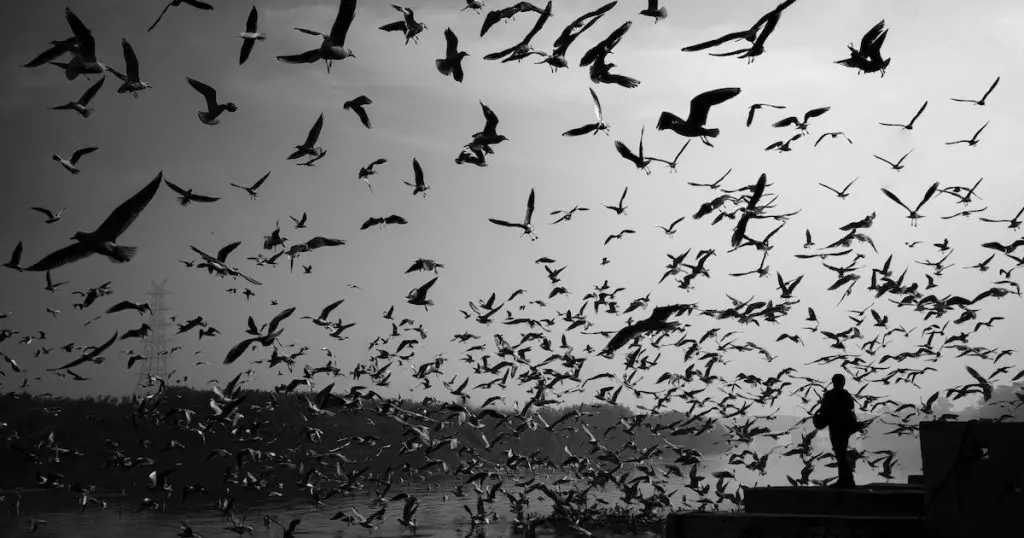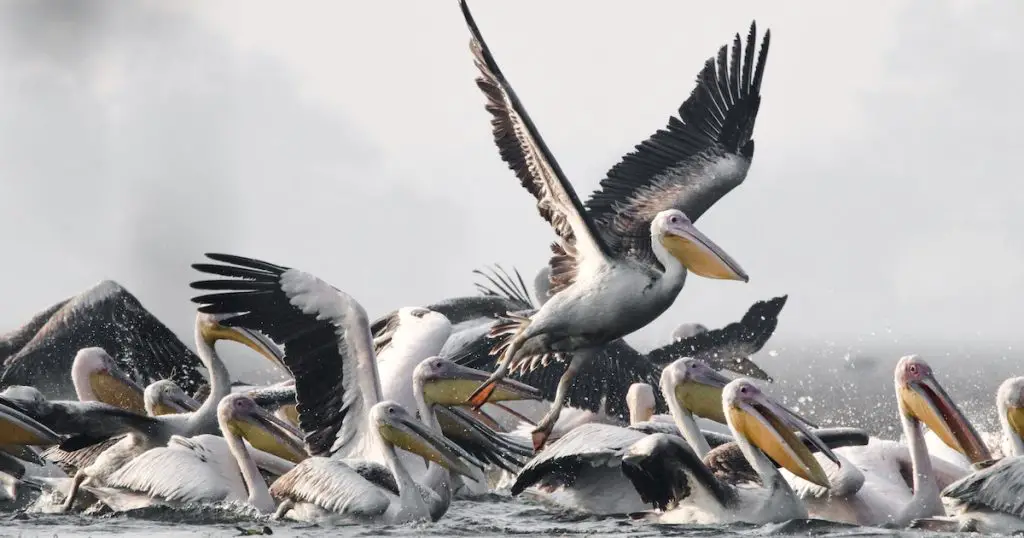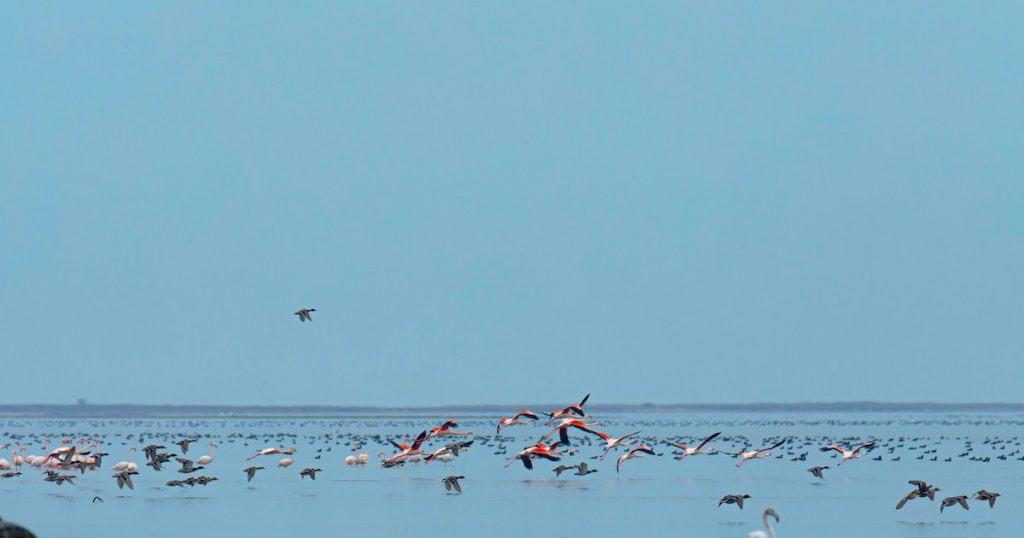Birds have always held a mystical charm, captivating the attention of many with their aerial acrobatics and melodic tunes. But, beyond the visible enchantment, lies the intricate world of migration.

Prescott, renowned for its natural beauty, stands as a crucial hub in understanding the annual migration patterns of birds. While many think of migration as a simple shift from point A to point B, the reality is far more intricate, especially in a location as biodiverse as Prescott.
The Driving Forces Behind Bird Migration
Birds don’t just migrate on a whim. Their patterns, routes, and destinations are dictated by an array of natural cues and internal instincts.
Environmental changes, especially in Prescott’s diverse landscape, act as prominent signals. The shifting temperatures of the seasons, together with fluctuating food availability, make migration a necessity for many species. Birds are essentially in pursuit of stability, moving to areas that guarantee survival and prosperity.
Biologically, birds are hardwired for migration. This biological clock, or the internal rhythms birds possess, often acts in conjunction with environmental triggers. Breeding, for instance, is a massive motivator.
Birds, especially those nesting in Prescott’s rich habitats, migrate to find optimal breeding grounds. They also possess a genetic predisposition to follow specific routes, making each journey a blend of instinct and adaptation.
Classifying Migratory Birds in Prescott
Prescott’s skies bear witness to a variety of avian visitors each year. However, not all birds are migratory. In fact, many call Prescott home year-round.
The permanent residents, such as the Northern Mockingbird, stay put, adapting to the changing seasons of Prescott. These birds have found ways to thrive amidst varying conditions and don’t need to travel long distances.

In contrast, short-distance migrants might travel only a few hundred miles, perhaps moving from higher elevations during colder months to the warmer lowlands. The Mountain Bluebird is a prime example, often spotted making such shifts.
Then there are the long-distance migrants, undertaking arduous journeys spanning continents. Birds like the Swainson’s Hawk, which travels all the way from North America to South America, are a testament to the incredible endurance some species possess.
Key Species and Their Unique Patterns
Every bird species has a tale, and Prescott is a stage for many such narratives. Let’s dive into a few notable ones.
Raptors, with their impressive wingspan and predatory prowess, dominate the skies. In Prescott, the Red-tailed Hawks are a common sight. These birds, usually seen soaring on thermals, migrate during the day. Their patterns are often shaped by the availability of prey and suitable nesting locations.
Bald Eagles, another majestic raptor, also grace Prescott. Their migration, while not as extensive as some, is dictated by the availability of open water and food.
Songbirds like Warblers and Thrushes, on the other hand, prefer the cover of night. Their nocturnal migrations are a sight to behold, especially during full moon nights. Warblers, known for their vibrant colors, migrate to tropical locations post-breeding. Thrushes, with their melodic songs, often migrate in large groups, using stars for navigation.
Lastly, Prescott’s wetlands and water bodies attract various waterfowl. Ducks, with their synchronized flights, migrate in search of warmer waters and abundant food. Geese, particularly the Canada Geese, form their characteristic ‘V’ shaped formation, covering vast distances together.
The Startling Journeys
Migration is a journey, and each route tells a story of endurance, survival, and sheer will.
Local movements within Arizona are more about adaptation than long-distance travel. Birds move to different altitudes or regions in response to food and weather changes.
Cross-country treks, such as those undertaken by the Rufous Hummingbird, cover thousands of miles. These birds breed in North America and winter in Central America, passing through Prescott and making the most of its rich nectar sources.

International migrations are perhaps the most awe-inspiring. The Arctic Tern, for instance, travels from the Arctic to the Antarctic and back each year. Prescott is just one of the many pit stops these resilient birds make.
Overcoming Challenges
Migration is no easy feat. It’s fraught with challenges, both natural and man-made.
Natural predators, like falcons or larger birds of prey, are a constant threat, especially to smaller birds. The cover of night, used by many migratory species, offers some protection, but it’s a game of constant vigilance.
Then, there’s the human element. Urbanization, with its towering buildings, has become a significant obstacle. Birds often collide with buildings, leading to fatalities. Light pollution is another concern, disorienting night-flying birds.
Environmental challenges such as turbulent weather, strong winds, or extended water bodies can exhaust and disorient birds, sometimes with fatal consequences. But, as they say, nature is the ultimate test of survival, and migration epitomizes this struggle.
Prescott’s Role in Conservation Efforts
Being a hub for various migratory birds, Prescott has taken commendable steps towards avian conservation.
Local sanctuaries play a pivotal role. They provide safe havens for birds to rest, recuperate, and sometimes even breed. The Prescott Audubon Society, for instance, actively works towards bird conservation, hosting events, and fostering community engagement.
Citizen science has gained momentum, with local birdwatchers playing a pivotal role. Their observations, often shared with global databases, provide valuable data for researchers and conservationists.
Prescott’s authorities also collaborate with national and international conservation bodies, ensuring that migratory routes are protected and that future generations continue to witness the magic of migration.
How Climate Change is Reshaping Patterns
Climate change, the looming global threat, has significant ramifications for bird migrations. Changing weather patterns affect food availability, breeding cycles, and even the very habitats birds rely on.
Migration timings have seen shifts, with many birds arriving earlier or departing later than usual. The unpredictability of weather events, combined with altered food chains, is pushing birds into unknown territories.
Prescott, too, has observed these changes. With hotter summers and erratic rainfall, some birds are either bypassing Prescott or altering their stay duration. It’s a reminder that the consequences of climate change are far-reaching, affecting even the tiniest creatures on our planet.
Tools and Techniques: Observing Migration in Prescott
The world of birdwatching has transformed over the years, and Prescott is at the forefront of leveraging modern tools and traditional techniques to observe these magnificent creatures.
If you’re keen on birdwatching, investing in a good pair of binoculars is essential. Binoculars enhance the viewing experience, bringing distant birds into sharp focus. Many enthusiasts also recommend field guides. Websites like Cornell Lab’s All About Birds are a treasure trove of information.
With the digital revolution, bird tracking has become sophisticated. Mobile applications like eBird, which allow birdwatchers to record and share their observations, have gained popularity. Drones, with their ability to cover large areas, are now being used for tracking and research purposes.

Prescott often hosts birdwatching events, workshops, and guided tours, making it easier for enthusiasts and novices alike to delve into this fascinating hobby. Engaging with a community of birdwatchers not only enriches the experience but also fosters a sense of collective responsibility towards these avian wonders.
FAQs: Annual Migration Patterns of Birds in Prescott
In this section, we will be delving into some of the most common inquiries and curiosities that surround our topic.
Why do birds migrate?
Birds primarily migrate in search of food and suitable breeding grounds. Environmental triggers like temperature fluctuations and food scarcity drive these patterns. Additionally, some birds have an innate biological instinct to migrate during specific seasons.
How can I contribute to bird conservation in Prescott?
There are numerous ways! Joining local organizations, like the Prescott Audubon Society, can be a start. Participating in local birdwatching events, spreading awareness, and even making your backyard bird-friendly can make a significant difference.
Are there any endangered migratory species in Prescott?
Yes, several migratory birds passing through Prescott are listed as threatened or endangered. It’s essential to stay updated through local conservation bodies or the U.S. Fish & Wildlife Service for specific details.
How has urbanization affected bird migration in the region?
Urbanization has posed multiple challenges. Habitat destruction, light pollution, and building collisions are some of the adverse effects of urban expansion. While Prescott has been proactive in conservation, urban threats remain a concern.
What is the best time to observe migration in Prescott?
Migration patterns vary, but spring (March to June) and fall (September to November) are typically the best times to observe the highest diversity and number of migratory birds in Prescott.
Conclusion: The Magic of Migration and its Future in Prescott
Migration is one of nature’s most incredible phenomena, a testament to the resilience and adaptability of birds. Prescott, with its diverse habitats and strategic location, has been a silent observer of these avian journeys for eons.
As we move into the future, the onus is on us to ensure that these skies remain filled with the symphony of wings and songs. Embracing conservation, fostering awareness, and celebrating the beauty of these birds are not just acts of appreciation but a commitment to the intricate web of life that ties us all together.



Leave a Comment
You must be logged in to post a comment.